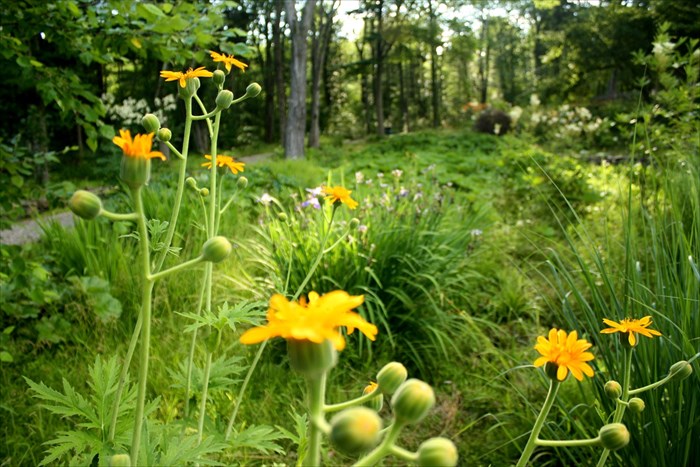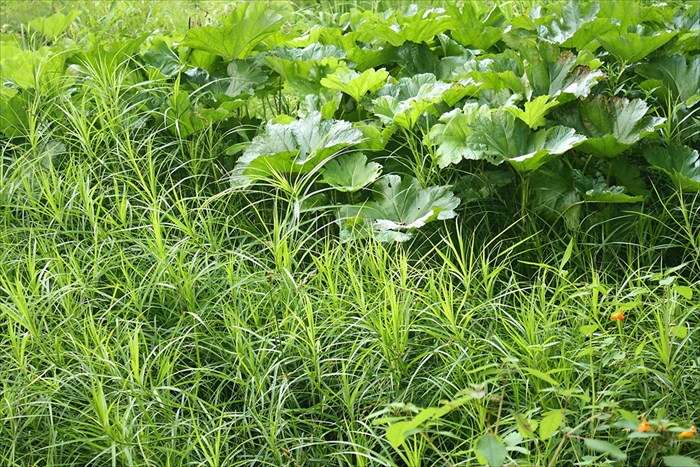This Saturday - Garden Open

My garden will be open this Saturday, June 29 from 10 am to 4 pm. If you anywhere live near Stockton, New Jersey, or feel up to a drive, please stop by. This is a Garden Conservancy Open Days event, so I'll be joining several neighboring gardens in Bucks County, Pennsylvania, just across the Delaware. We're all close to each other so you can easily visit all the gardens on the tour. For directions to my garden, click this link. For directions to the Bucks County gardens, click this link. For a preview of what my garden is likely to look like this weekend, go to my photo set on Flickr by clicking on the picture below.
To orient visitors, I prepared the following information sheet.
About the Garden at Federal Twist
When we moved to a mid-century house overlooking the woods, I knew only a naturalistic, informal garden would be appropriate to the place. Very much in the “new perennial” tradition of such garden designers as Piet Oudolf--though a localized variation very different visually from a typical Oudolf design--the plantings emphasize structure, shape and texture more than flower. I began the garden as an experiment, wanting to see what kind of garden I could make in unimproved, heavy, wet clay.
This garden is about ecology, and it exemplifies the precept that disturbance is a key driver of ecological change, increasing diversity and adaptation over time. As climate changes and planting zones shift northward, and as weather becomes more unpredictable, such experimental gardens may become increasingly popular. The garden celebrates seasonal change. It’s impossible to “see” it in one visit. It starts as an absolutely bare field in late March, quickly gains green texture and form as spring advances, morphs into a dreamscape of flowering spires and mounds in late summer, then takes on glorious reds, browns, russets, and oranges as the late grasses flower in fall. Most plants are highly structural and remain standing through winter to catch early morning hoar frosts and snow, making a long-lasting winter landscape. (You’re welcome to stop by for private visits at different times of the year.)The garden had its birth in a major ecological disturbance—wholesale removal of trees. When we first came here, the land was covered with weedy junipers. We cut 60 or 70 trees to make a clearing in the woods, letting in more light and air, and making space to create a garden. These disturbances have continued over the eight years since the junipers were cut down, the most recent being the fall of 17 giant white pines during Hurricane Sandy last fall (you will see their trunks and upended roots just outside the garden—a rough scene now, but in ten years a whole new ecology will have replaced what Sandy destroyed). With the white pines gone, now the garden has a southern exposure, and that will initiate further changes inside the garden.The garden is a created ecosystem, made up of plants suited to hard conditions. Because most of them like wet environments, they tend to be large. (They also mature late, so the garden peaks in the fall.) I call the garden a wet prairie … actually, an artificial wet prairie, because it is like a prairie; masses of herbaceous perennials are mixed with a matrix of grasses; its prairie-like state is maintained by wholesale cutting and limited burning in late winter. Many plants are native, many are not. Plants are selected for their appropriateness to the difficult environment, and for their visual attributes and character, not for their place of origin. As in a natural prairie, which forms a thick, interwoven carpet (often you will find hundreds of plants in a square yard of natural prairie), I use highly competitive plants, and encourage self-seeding, to achieve a similarly complex, interwoven planting. At the same time, I plant in masses, and repeat the same plants singly and in small groups to maintain “legibility” of shape, form, and texture.
Garden maintenance is more like farming than like traditional gardening. Because there are literally thousands of plants, gardening is extensive, not intensive. I rarely pay attention to individual plants but garden by managing large areas, or by selective editing (weeding) to keep the balance I want. The editing is very important. With such aggressive plants, one or two could get the upper hand and turn the garden into a monoculture. I’m keeping my eye on Inula racemosa ‘Sonnenspeer’, the large plant with fuzzy, floppy leaves, which you may notice is spreading rapidly. I let the garden follow its nature, but I do keep watch and intervene when necessary.

